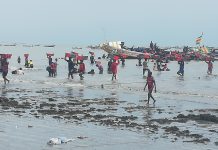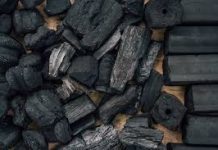On
CLIMATE CHANGE
A lethal product of Capitalism
Final Part
Scientific timelines on global temperatures indicate that, 2020, five years after the Paris Agreement, was one of the warmest years in the annals of global climate history. This should not be surprising, anyway! Because in the late 1950s, scientists warned that carbon dioxide was building up [in the atmosphere] and that this could be a problem. And by the late 1970s, they knew this accumulation would be catastrophic. Worst enough, between 2015 and 2020, the rate of global deforestation was estimated at 10 million hectares per year (www.fao.org, n.d). With this, one continues to see the little impact the aforesaid convergences and systems have…Enough scientific studies have revealed that the critical drivers of land use that lead to the rapid loss of land cover and increase in global temperatures due to emission of carbon-dioxide include industrial expansion, real estate development, and timber extraction. All these are pure actions sustaining the business of capitalism. But because positive environmental policies will decrease per capita incomes (Clark, 2006), the ‘trade-off’ between environmental protection and economic growth remains to be given a blind eye. Thus, the argument that high level of economic growth can ameliorate the very problems it cause remain firm in the views of the gluttony who subscribe to the misconstrued view that the environment is something of a luxury, an issue which can be attended to only when per capita incomes have risen to some target level (ibid).
The catastrophe of “global“ plans and commitments is that they are hinged on very ambitious but haphazardly coordinated mechanisms championed by individuals and institutions that do not feel the pangs and pains of the harshest of conditions they purport to address. This deliberate inaction is disproportionately increasing the impacts of environmental destruction and climate change on the “poor and vulnerable” especially in countries in the Global South. The “poor and vulnerable” bear the brunt of increased global temperatures causing skin diseases and rising sea levels affecting food and water systems due to salination of fresh water bodies; and rainfall variabilities causing droughts, and floods; thus, hunger and starvation. A UN Report on the International Day for Disaster Risk Reduction, 2020 indicated that overall climate-related disaster went up from 3,656 in 1980-1999 to 6,681 in 2000-2019; thus, showing an increase of 83% between the said periods.
Unfortunately, when struck by such disaster and mishaps, they (the poor and vulnerable) resort to such unsustainable and desperate coping and adaptive strategies as asset stripping (the sale of assets such as livestock, houses, household utensils and farming equipment or barter trading for food). In many cases, [poor] households resort to selling livestock but often the prices they realise from the sales largely depend on the level of desperation of that household. This means that households or individuals often get prices below the market value for their livestock (UNDP, 2017). This goes to show that even though the “poor and vulnerable” contribute to the concentration of GHGs in the atmosphere and land cover loss by embarking on certain human activities like burning objects releasing carbon-dioxide and felling trees (which they mostly do for survival), they pay more price for the catastrophic events of climate and environmental disasters, than the giant destroyers who own industries and are making billions of Dollars! Evidently, the “poor and vulnerable” depend on climate sensitive natural resources far more directly than do the rich/”morally poor”. But this does not mean that the former consumes more natural resources than the latter.
In The Gambia, a recent study by Dr. Nfamara K Dampha (2021) has revealed that the major drivers of loss of land cover and [environmental destruction] are industrial expansion, real estate development, climate change impacts, and timber extraction. According to the study, some of these factors are necessary for economic growth but not suitable for sustainable development. The analysis of the study revealed that a forest cover loss of 22,408 hectares (18% decrease) from 1985 to 2020 in just Southwestern Gambia. And the deforestation and other land changes in just the said area between 2003 and 2020 have contributed to 21,824 metric tons of carbon emissions. Not only are the actions of the business giants mostly harming the “poor and vulnerable”, but they are equally decreasing the chances of better living standards of posterity generations. In The Gambia, climate records show an increase of 0.4% per decade increase of average monthly temperature increase across the country. And due to time lag between cause and effect of global climate system, adverse impacts are likely to persist for generations even after the global community succeeds in stabilising GHGs concentrations in the atmosphere (NAPA, 2007).
The Gambia is highly vulnerable to Climate Change. Thus, climate change impacts can cause failed or excess rains which could cause hunger and destruction of properties in the country (Ceesay et. al. n.d). Additionally, Jaiteh et, al. (n.d), The Gambia’s fisheries, fish resources [and other food systems and livelihoods] are vulnerable to climate change and variability. Hyper-salinity in mangroves and other wetland ecosystems could inhibit the systematic spawning and recruitment and reduction in the population of economically important fisheries species. Increase in average temperature will affect the fisheries sector by altering fish habitat availability, quality, and potential for the habitat to sustain fish communities. This can automatically lead to drastic reduction of fisheries and fish resources stock; thus, severely impacting the ability of the country to, on one hand earn economic benefits from these resources, and on the other hand affect the country’s food security which eventually threatens the lives of the “poor and vulnerable”. Despite all the scientific studies, impacts and potential damages of climate change in the country, as well as the relatively early cautionary Banjul Declaration of 1977 by former president, Jawara, for the protection of biodiversity, it was until 2016 that The Gambia developed its first Climate Change Policy which is an indication of the long level of complacency and political unwillingness to address Climate Change and related environmental issues. Although, The Gambia, has been preparing its Nationally Determined Contributions (NDCs) reports, which give inventories of the level of countries’ GHGs emissions and their efforts in combating climate change (as required of countries by the Paris Agreement), the institutionalisation of a holistically integrated Climate Change Policy had been long overdue.
Because the world is a globalized village, the nexus between the expansion of capitalist mode of operations and forces like industrialisation and increased consumption of industrial products in the name of economic growth is clear. Have you ever sat for a split moment and thought of the huge role you are playing in sustaining the business of the destructive capitalists? Did you know that the coffee that we enjoy every morning in our air-conditioned offices, the chocolate sticks we bring along for our children at home when we close from work, the fuel we fill in our vehicle tanks at gas stations, all have been produced in the most harmful way to our climate and environment? So should we not be guilty that our consumption patterns are not only putting more Dollars in the pockets of the “morally poor”, but are equally continuing to increase the risks of climate and environmental disasters? Sure! We should be, at least for the sake of protecting the human race! But then are we going to stop consuming what we have been consuming? Are we going to cease buying and consuming industrial products in order to bankrupt the producers harming our environment and climate? That may sound preposterous and practically too late and impossible! It is really not! The way out is when we are able to find the right answer(s) to the question: how can development be environmentally friendly, economically viable and socially inclusive? Unfortunately, in a world where the gluttony keep converting poor people’s fertile lands into oil-drilling grounds, fresh water bodies into “oceans of oil” and forest areas into lines of lifeless skyscrapers, the answers to these questions do not seem to be provided anytime soon…
-Witten by:
Muhammed Ceesay, BA, Development Studies; and Climate Change Project Manager, Activista, Gambia
-Contact: [email protected] or [email protected] or 7897182/5269659
Disclaimer: This article is not a scientific paper and should not be cited as such. Although it has provided citations (where necessary), it has been developed based on my personal opinions on the subject matter guided by relevant literatures and materials I consulted.





















